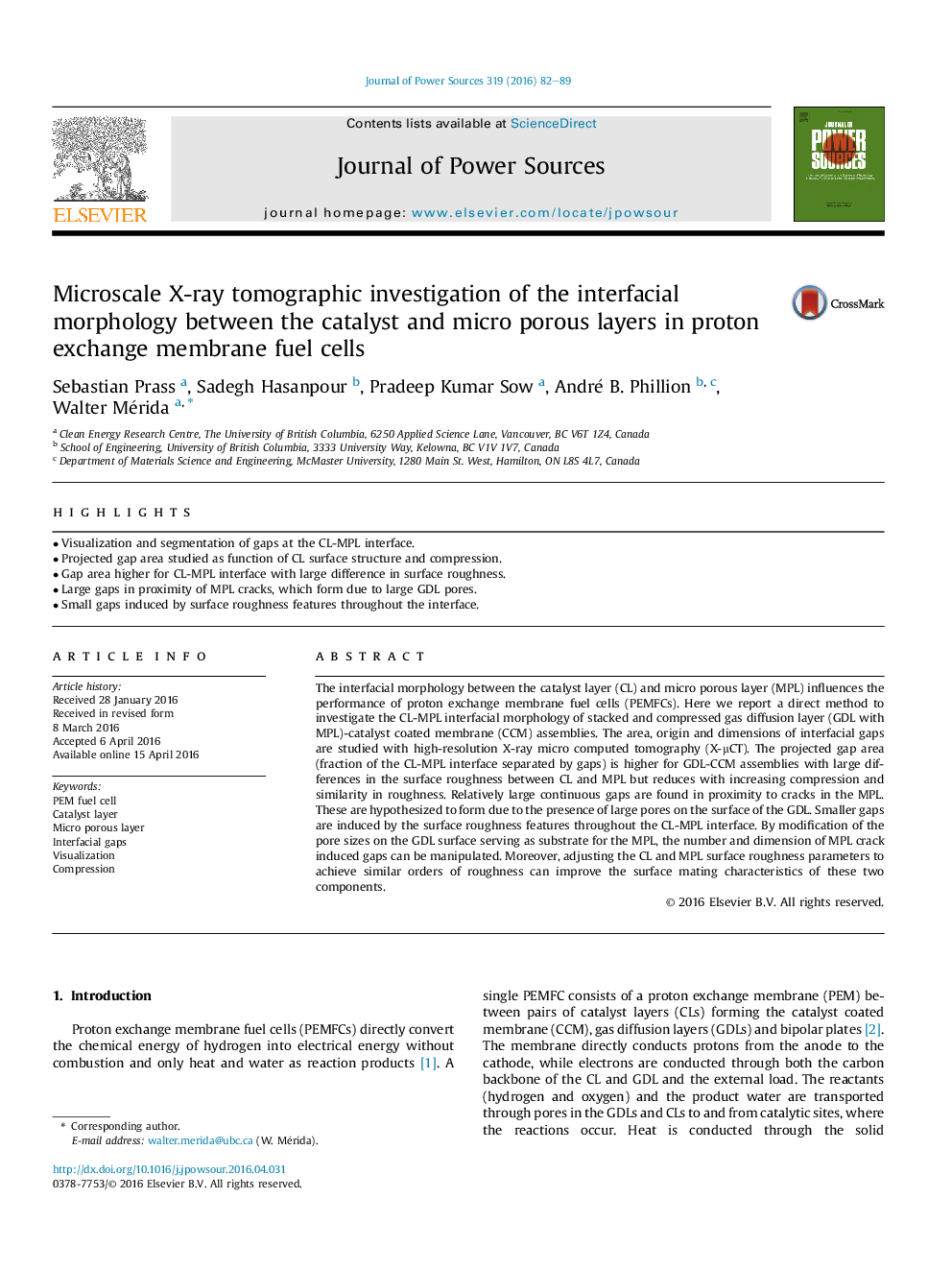| Article ID | Journal | Published Year | Pages | File Type |
|---|---|---|---|---|
| 1292009 | Journal of Power Sources | 2016 | 8 Pages |
•Visualization and segmentation of gaps at the CL-MPL interface.•Projected gap area studied as function of CL surface structure and compression.•Gap area higher for CL-MPL interface with large difference in surface roughness.•Large gaps in proximity of MPL cracks, which form due to large GDL pores.•Small gaps induced by surface roughness features throughout the interface.
The interfacial morphology between the catalyst layer (CL) and micro porous layer (MPL) influences the performance of proton exchange membrane fuel cells (PEMFCs). Here we report a direct method to investigate the CL-MPL interfacial morphology of stacked and compressed gas diffusion layer (GDL with MPL)-catalyst coated membrane (CCM) assemblies. The area, origin and dimensions of interfacial gaps are studied with high-resolution X-ray micro computed tomography (X-μCT). The projected gap area (fraction of the CL-MPL interface separated by gaps) is higher for GDL-CCM assemblies with large differences in the surface roughness between CL and MPL but reduces with increasing compression and similarity in roughness. Relatively large continuous gaps are found in proximity to cracks in the MPL. These are hypothesized to form due to the presence of large pores on the surface of the GDL. Smaller gaps are induced by the surface roughness features throughout the CL-MPL interface. By modification of the pore sizes on the GDL surface serving as substrate for the MPL, the number and dimension of MPL crack induced gaps can be manipulated. Moreover, adjusting the CL and MPL surface roughness parameters to achieve similar orders of roughness can improve the surface mating characteristics of these two components.
